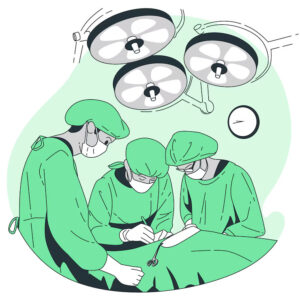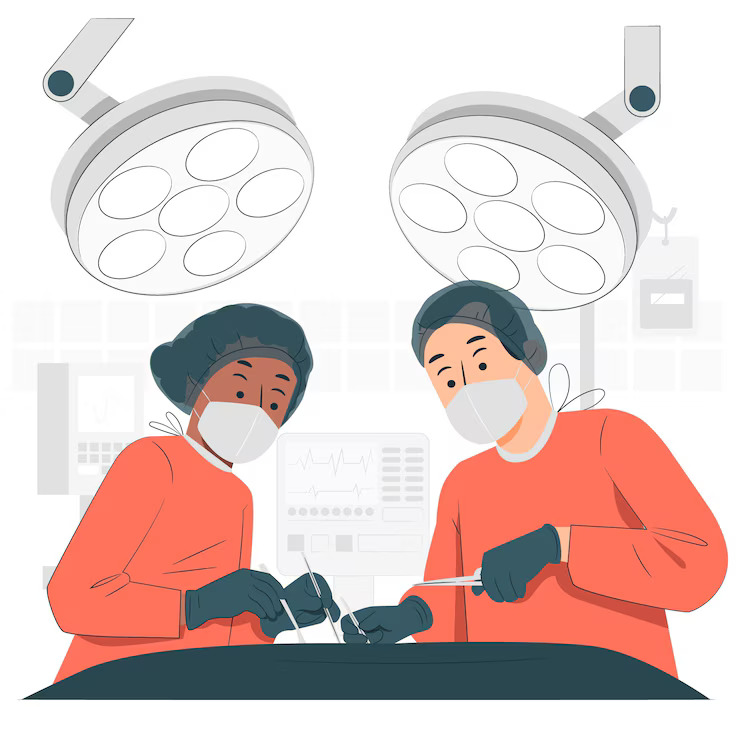Imagine being able to look inside your body without a large incision. Sounds futuristic, right? That’s exactly what laparoscopy surgery offers. This minimally invasive technique is changing the way surgeries are performed, offering patients quicker recovery times and fewer complications. But how did it all start, and what should you know if you or a loved one needs such a procedure?

History and Development
Laparoscopy surgery might seem like a modern marvel, but its roots go back over a century. The first laparoscopic procedure was performed in the early 1900s, but it wasn’t until the 1980s that the technique became widely used. Advancements in technology, such as high-definition cameras and improved surgical tools, have made laparoscopy safer and more effective than ever before.
How Laparoscopy Surgery Works
Step-by-Step Process
- Anesthesia: The medical team gives the patient general anesthesia to ensure they are asleep and pain-free during the procedure.
- Small Incisions: The surgeon makes small incisions in the abdomen.
- Inserting the Laparoscope: The surgeon inserts a laparoscope through one of the incisions. This device has a camera that sends images to a monitor.
- Performing the Surgery: The surgeon inserts specialized instruments through the other incisions to perform the surgery.
- Closing Up: Once you complete the procedure, you remove the instruments and close the incisions with sutures or surgical tape.
Common Procedures Using Laparoscopy
You can use laparoscopy for a variety of procedures, including:
- Gallbladder Removal (Cholecystectomy): Removing the gallbladder due to gallstones or inflammation.
- Appendectomy: Removing the appendix in cases of appendicitis.
- Hernia Repair: Fixing hernias by reinforcing the abdominal wall.
- Gynecological Procedures: Treating conditions like endometriosis, and ovarian cysts, and performing hysterectomies.
- Bariatric Surgery: Helping with weight loss by making changes to the digestive system.
Benefits of Laparoscopy Surgery
Why is laparoscopy becoming the go-to method for many surgeries? Here are some key benefits:
- Less Pain: Smaller incisions mean less post-operative pain.
- Quicker Recovery: Patients can often go home the same day or after a short hospital stay.
- Minimal Scarring: Tiny incisions leave very little scarring compared to traditional surgery.
- Lower Risk of Infection: Smaller wounds reduce the risk of infection.
- Shorter Hospital Stay: Most patients can resume normal activities much faster.
Risks and Considerations
While laparoscopy surgery is generally safe, it’s not without risks. Potential complications include:
- Infection: As with any surgery, there’s a risk of infection at the incision sites.
- Bleeding: Although minimal, there’s always a risk of bleeding.
- Injury to Organs: There’s a small risk that the instruments used in the procedure could damage internal organs.
- Adverse Reactions to Anesthesia: Some patients may have adverse reactions to the anesthesia used.
It’s important to discuss these risks with your doctor to understand the best course of action for your specific situation.
Preparing for Laparoscopy Surgery
Preparation is key to a successful laparoscopy surgery. Here’s what you can expect:
- Medical Evaluation: Your doctor will conduct a thorough medical evaluation, including blood tests and imaging, to ensure you’re a good candidate for laparoscopy.
- Medications: You may need to stop certain medications before the surgery. Make sure to inform your doctor about all medications and supplements you are taking.
- Fasting: You’ll likely need to fast for 8-12 hours before the procedure.
- Arrangements: Plan for someone to drive you home after the surgery, as you won’t be able to drive yourself.
The Day of Surgery
On the day of the surgery, follow these steps to ensure everything goes smoothly:
- Arrive Early: Arrive at the hospital or surgical center with plenty of time before your scheduled surgery.
- Wear Comfortable Clothing: Opt for loose, comfortable clothing that is easy to change out of.
- Follow Instructions: Adhere to all pre-surgery instructions provided by your healthcare team.
Recovery Process
Recovery from laparoscopy surgery is generally quick, but it’s important to follow your doctor’s instructions closely:
- Rest: Get plenty of rest and avoid strenuous activities.
- Pain Management: Take prescribed pain medications as directed to manage any discomfort.
- Incision Care: Keep the incision sites clean and dry to prevent infection.
- Follow-Up Appointments: Attend all follow-up appointments to ensure proper healing.
Diet and Lifestyle Post-Surgery
Your diet and lifestyle play a crucial role in your recovery. Here’s what you should keep in mind:
- Diet: Start with light, easily digestible foods and gradually return to your normal diet as advised by your doctor.
- Hydration: Drink plenty of water to stay hydrated.
- Exercise: Avoid heavy lifting and intense exercise until your doctor gives you the green light.
- Listen to Your Body: Pay attention to how you feel and report any unusual symptoms to your doctor.
Follow-Up Care
Follow-up care is essential for a smooth recovery. During these appointments, your doctor will:
- Check Incisions: Ensure that your incisions are healing properly.
- Monitor Recovery: Assess your overall recovery and address any concerns.
- Adjust Medications: Make any necessary adjustments to your medications based on your recovery progress.
FAQs
Q1. What is the recovery time for laparoscopy surgery?
A. Recovery time varies depending on the type of procedure and the individual’s overall health, but most people can resume normal activities within a week.
Q2. Is laparoscopy surgery painful?
A. While there may be some discomfort after the surgery, it is generally less painful than traditional open surgery. Pain can be managed with medication.
Q3. Can anyone have laparoscopy surgery?
A. Not everyone is a candidate for laparoscopy surgery. Your doctor will determine if it is the best option for you based on your medical history and specific condition.
Q4. How long do the effects of anesthesia last?
A. The effects of anesthesia can last several hours after the surgery, so you will need someone to drive you home and stay with you for a while.
Q5. Are there any long-term effects of laparoscopy surgery?
A. Most people do not experience long-term effects from laparoscopy surgery. However, as with any surgery, there is a small risk of complications that should be discussed with your doctor.
Conclusion
Laparoscopy surgery represents a significant advancement in medical technology, offering patients a less invasive option for many surgical procedures. With its benefits of quicker recovery, less pain, and minimal scarring, it’s no wonder this technique is becoming more popular. By understanding the process, preparing adequately, and following post-surgery care instructions, patients can ensure a smooth and successful recovery.
For anyone considering laparoscopy surgery, it’s crucial to discuss all aspects with your healthcare provider to determine the best approach

